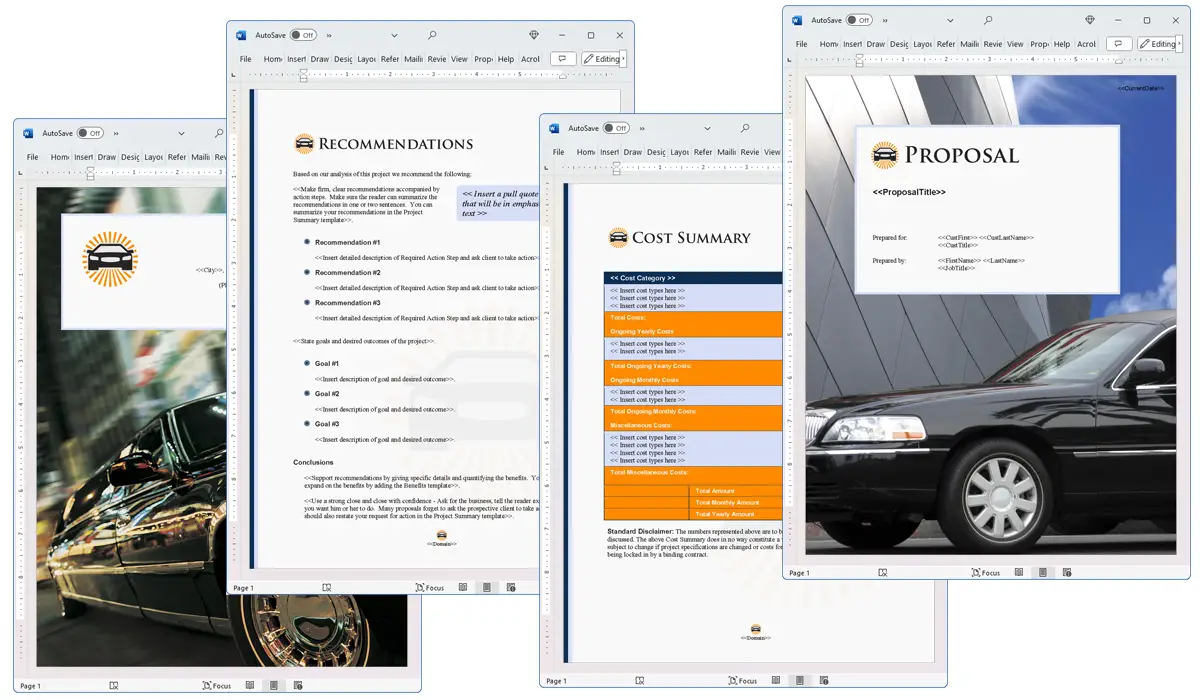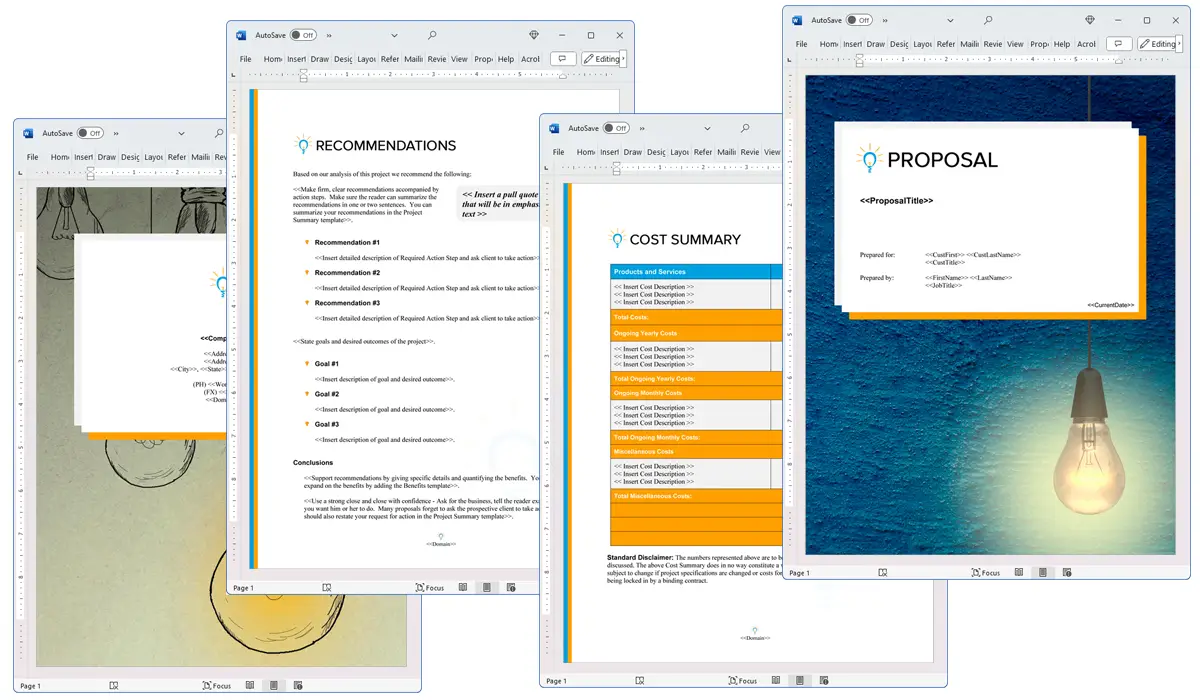What is the Consignment chapter used for?
Proposal Kit Professional Bundle adds more design themes, all six Contract Packs,
a project management library, and Expert Edition software.

Illustration of Proposal Pack Transportation #6
We include this Consignment chapter template in every Proposal Pack, along with thousands more. You assemble this chapter with others in various combinations to create custom-tailored business proposals, plans, reports, and other documents. Proposal Packs apply custom visual designs to the templates, giving the final documents a consistent professional finish.
 DOWNLOADABLE, ONE-TIME COST, NO SUBSCRIPTION FEES
DOWNLOADABLE, ONE-TIME COST, NO SUBSCRIPTION FEES
Overview of the Consignment Chapter
The Consignment chapter is a specialized part of a business proposal, primarily used to outline the terms, conditions, and details of a consignment agreement between two parties. When used in a business proposal, this chapter serves as an important tool for communicating how products will be stored, sold, or transferred on a consignment basis: that is, allowing one party to sell goods on behalf of another, earning a profit from the sales without owning the inventory.
How is the Consignment Chapter Used?
In a business proposal, the Consignment chapter is used to provide clarity and structure to a consignment agreement proposal. It helps both the owner of the goods and the potential seller to understand the specifics of the arrangement, such as the responsibilities of each party, the financial aspects like pricing and profit sharing, and the duration of the consignment agreement. This chapter is vital for ensuring that all parties involved have a clear understanding of the terms and conditions before any agreement is finalized.
What is Included in the Consignment Chapter?
Typically, the Consignment chapter includes several key elements:
- Definition of Consignment: Clarification of what consignment entails and how it is applied considering the situation of the agreement.
- Roles and Responsibilities: Detailed descriptions of the duties of the consignor (the owner of the goods) and the consignee (the seller).
- Financial Terms: Explanation of pricing, payment terms, and profit distribution between the consignor and consignee.
- Inventory and Stock: Information on how inventory will be managed, reported, and audited.
- Duration of Agreement: The time period for which the consignment agreement is valid, along with renewal terms.
Use Case Examples for the Consignment Chapter
- Fashion: A clothing designer consigns their new line to a boutique to reach a broader market.
- Art: An artist provides their artworks to a gallery for an exhibition and potential sale on a consignment basis.
- Product Sales: A manufacturer consigns their products to various retailers to test market response without requiring retailers to purchase inventory upfront.
- Obligations: Detailed explanation of the legal and logistical obligations of both consignor and consignee, ensuring both parties are protected and aware of their duties.
Key Takeaways
- The Consignment chapter is important for outlining the specifics of a consignment agreement within a proposal.
- It ensures clarity and understanding between the owner of the goods and the seller.
- This chapter covers vital information including roles, financial terms, and inventory management.
- It is applicable in various industries, notably fashion, art, and retail.
- Proper use of the Consignment chapter can lead to successful partnerships and business expansions through consignment arrangements.

Illustration of Proposal Pack Transportation #10
 What Our Clients Say
What Our Clients SayThanks again! I really like this wizard. It will make my next few days much more bearable!"
 4.7 stars, based on 845 reviews
4.7 stars, based on 845 reviewsRelated Chapters
Samples Using the Consignment Chapter
Document Layouts Using the Consignment Chapter

The Consignment chapter and other chapters are integrated into a Word document as illustrated here in the Proposal Pack Concepts #17 design theme. There are hundreds of design themes available, and every design theme includes the Consignment chapter template.
A proper business proposal will include multiple chapters. This chapter is just one of many you can build into your proposal. We include the complete fill-in-the-blank template in our Proposal Pack template collections. We also include a library of sample proposals illustrating how companies in different industries, both large and small, have written proposals using our Proposal Packs. This template will show you how to write the Consignment.
We include a chapter library for you to build from based on your needs. All proposals are different and have different needs and goals. Pick the chapters from our collection and organize them as needed for your proposal.
Using the Proposal Pack template library, you can create any business proposal, report, study, plan, or document.
 Ian Lauder has been helping businesses write their proposals and contracts for two decades. Ian is the owner and founder of Proposal Kit, one of the original sources of business proposal and contract software products started in 1997.
Ian Lauder has been helping businesses write their proposals and contracts for two decades. Ian is the owner and founder of Proposal Kit, one of the original sources of business proposal and contract software products started in 1997.By Ian Lauder
 Published by Proposal Kit, Inc.
Published by Proposal Kit, Inc.


 Cart
Cart
 Facebook
Facebook YouTube
YouTube X
X Search Site
Search Site